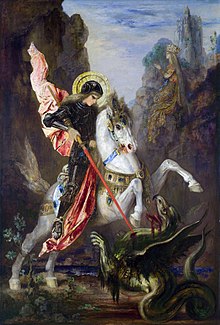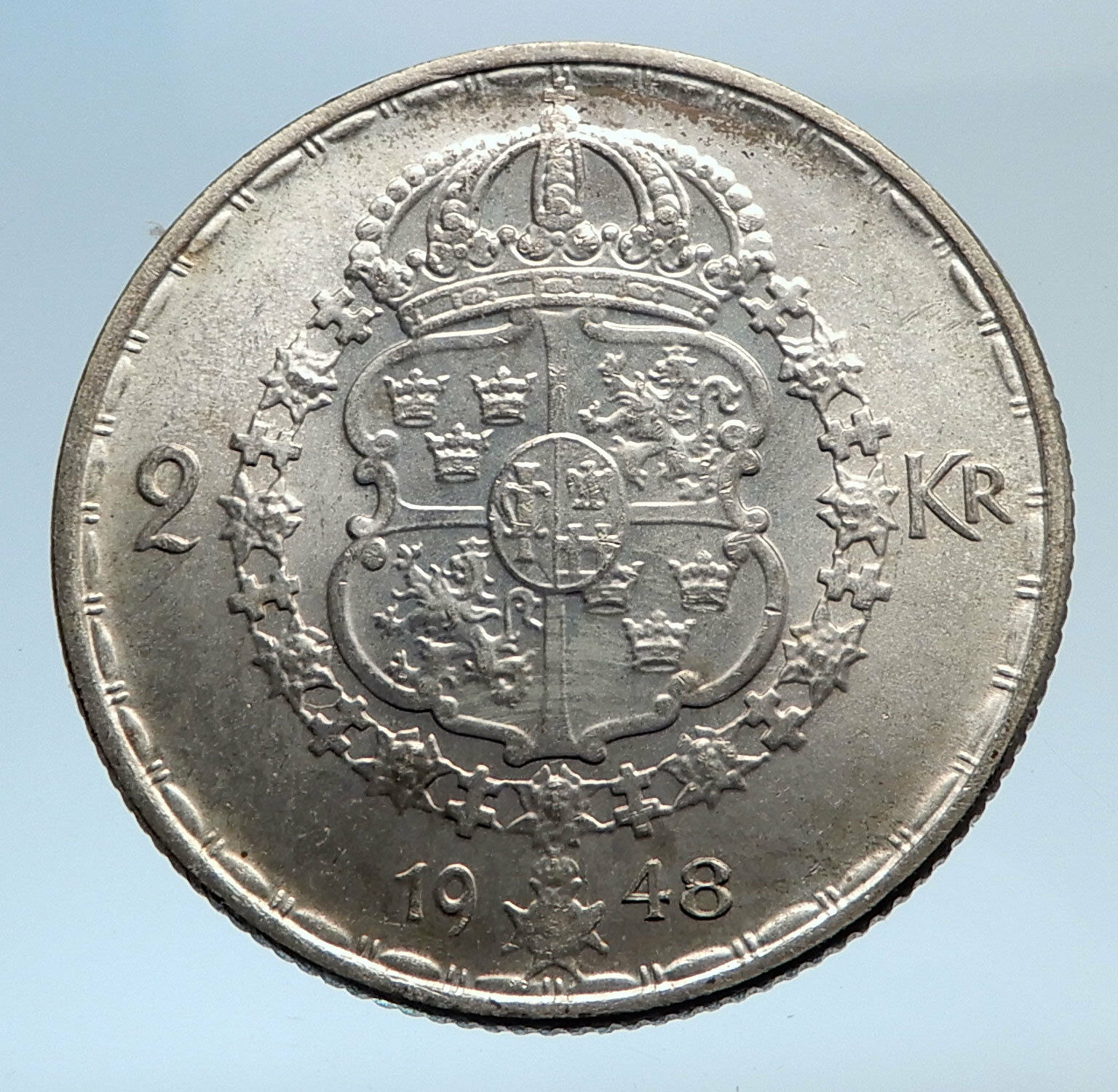|
Russia
Catherine II “Cathrine the Great” of Russia – Empress 1762-1796 A.D.
1764 EM Copper 5 Kopeks 42mm (52.80 grams) Ekaterinburg mint
Reference: C# 59.3 (1764-1796)
ПЯТЬ КОПҌEКЪ, Royal coat of arms, the crowned imperial double eagle with scepter and orb with St. George slaying the dragon at center.
II, Monogram of Catherine II with crown above; flanked by year; all within wreath.
You are bidding on the exact item pictured, provided with a Certificate of Authenticity and Lifetime Guarantee of Authenticity.
 Saint George, born in Lydda, Roman Palestine, was a soldier in the Roman army and was later venerated as a Christian martyr. His father was Gerontius, a Greek Christian from Cappadocia, and an official in the Roman army. His mother, Polychronia was a Christian from Roman Palestine. Saint George became an officer in the Roman army in the Guard of Diocletian. In hagiography, Saint George is one of the most venerated saints in the Catholic (Western and Eastern Rites), Anglican, Eastern Orthodox, and the Oriental Orthodox churches. He is immortalized in the tale of Saint George and the Dragon and is one of the Fourteen Holy Helpers. His memorial is celebrated on 23 April (6 May), and he is regarded as one of the most prominent military saints. Saint George, born in Lydda, Roman Palestine, was a soldier in the Roman army and was later venerated as a Christian martyr. His father was Gerontius, a Greek Christian from Cappadocia, and an official in the Roman army. His mother, Polychronia was a Christian from Roman Palestine. Saint George became an officer in the Roman army in the Guard of Diocletian. In hagiography, Saint George is one of the most venerated saints in the Catholic (Western and Eastern Rites), Anglican, Eastern Orthodox, and the Oriental Orthodox churches. He is immortalized in the tale of Saint George and the Dragon and is one of the Fourteen Holy Helpers. His memorial is celebrated on 23 April (6 May), and he is regarded as one of the most prominent military saints.
Many Patronages of Saint George exist around the world, including: Georgia, England, Egypt, Bulgaria, Aragon, Catalonia, Romania, Ethiopia, Greece, India, Iraq, Lebanon, Lithuania, Palestine, Portugal, Sardinia, Serbia, Macedonia, Ukraine, Russia and Syria, as well as the cities of Genoa, Amersfoort, Beirut, Botoşani, Drobeta Turnu-Severin, Timișoara, Fakiha, Bteghrine, Cáceres, Ferrara, Freiburg im Breisgau, Kragujevac, Kumanovo, Ljubljana, Pérouges, Pomorie, Preston, Qormi, Rio de Janeiro, Lydda, Lviv, Barcelona, Moscow and Victoria, as well as of the Scout Movement and a wide range of professions, organizations, and disease sufferers including leprosy, plague, herpes and syphilis.
The episode Saint George and the Dragon appended to the hagiography of Saint George was Eastern in origin, brought back with the Crusaders and retold with the courtly appurtenances belonging to the genre of Romance. The earliest known depictions of the motif are from tenth- or eleventh-century Cappadocia and eleventh-century Georgia; previously, in the iconography of Eastern Orthodoxy, George had been depicted as a soldier since at least the seventh century. The earliest known surviving narrative of the dragon episode is an eleventh-century Georgian text.
The dragon motif was first combined with the already standardised Passio Georgii in Vincent of Beauvais’ encyclopedic Speculum Historiale, and then Jacobus de Voragine’s Golden Legend (ca 1260) guaranteed its popularity in the later Middle Ages as a literary and pictorial subject. The legend gradually became part of the Christian traditions relating to Saint George and was used in many festivals thereafter.
.jpg/220px-Portrait_of_Empress_Catherine_II(a).jpg) Catherine II (Russian: Екатерина II Великая, Yekaterina II Velikaya), also known as Catherine the Great, born 2 May [O.S. 21 April] 1729 as Sophie Friederike Auguste von Anhalt-Zerbst-Dornburg in Stettin, Pomerania, reigned as Empress of Russia from 9 July [O.S. 28 June] 1762 until her death (17 November [O.S. 6 November] 1796). Under her direct auspices the Russian Empire expanded, improved its administration, and continued to modernize along Western European lines. Catherine’s rule re-vitalized Russia, which grew stronger than ever and became recognized as one of the great powers of Europe. Her successes in complex foreign policy and her sometimes brutal reprisals in the wake of rebellion (most notably Pugachev’s Rebellion) complemented her hectic private life. Catherine II (Russian: Екатерина II Великая, Yekaterina II Velikaya), also known as Catherine the Great, born 2 May [O.S. 21 April] 1729 as Sophie Friederike Auguste von Anhalt-Zerbst-Dornburg in Stettin, Pomerania, reigned as Empress of Russia from 9 July [O.S. 28 June] 1762 until her death (17 November [O.S. 6 November] 1796). Under her direct auspices the Russian Empire expanded, improved its administration, and continued to modernize along Western European lines. Catherine’s rule re-vitalized Russia, which grew stronger than ever and became recognized as one of the great powers of Europe. Her successes in complex foreign policy and her sometimes brutal reprisals in the wake of rebellion (most notably Pugachev’s Rebellion) complemented her hectic private life.
Catherine took power after a conspiracy deposed her husband, Peter III (1728�”1762), and her reign saw the high point in the influence of the Russian nobility. Peter III, under pressure from the nobility, had already increased the authority of the great landed proprietors over their muzhiks and serfs. In spite of the duties imposed on the nobles by the first prominent “modernizer” of Russia, Tsar Peter I (1672�”1725), and despite Catherine’s friendships with the western European thinkers of the Enlightenment (in particular Denis Diderot, Voltaire and Montesquieu) Catherine found it impractical to improve the lot of her poorest subjects, who continued to suffer (for example) military conscription. The distinctions between peasant rights on votchina and pomestie estates virtually disappeared in law as well as in practice during her reign.
In 1775 Catherine decreed a Statute for the Administration of the Provinces of the Russian Empire. The Statute sought to efficiently govern Russia by increasing population and dividing the country into provinces and districts. By the end of her reign, there were fifty provinces, nearly 500 districts, more than double the government officials, and they were spending six times as much as previously on local government. In 1785 Catherine conferred on the nobility the Charter to the Nobility, increasing further the power of the landed oligarchs. Nobles in each district elected a Marshal of the Nobility who spoke on their behalf to the monarch on issues of concern to them, mainly economic ones. In the same year, Catherine issued the Charter of the Towns, which distributed all people into six groups as a way to limit the power of nobles and create a middle estate. Each of these charters had major flaws, and Catherine seemingly could not gain the reform she long desired for her country. After her death, this was made even more obvious through her son Paul.
|





 Saint George, born in Lydda, Roman Palestine, was a soldier in the Roman army and was later venerated as a Christian martyr. His father was Gerontius, a Greek Christian from Cappadocia, and an official in the Roman army. His mother, Polychronia was a Christian from Roman Palestine. Saint George became an officer in the Roman army in the Guard of Diocletian. In hagiography, Saint George is one of the most venerated saints in the Catholic (Western and Eastern Rites), Anglican, Eastern Orthodox, and the Oriental Orthodox churches. He is immortalized in the tale of Saint George and the Dragon and is one of the Fourteen Holy Helpers. His memorial is celebrated on 23 April (6 May), and he is regarded as one of the most prominent military saints.
Saint George, born in Lydda, Roman Palestine, was a soldier in the Roman army and was later venerated as a Christian martyr. His father was Gerontius, a Greek Christian from Cappadocia, and an official in the Roman army. His mother, Polychronia was a Christian from Roman Palestine. Saint George became an officer in the Roman army in the Guard of Diocletian. In hagiography, Saint George is one of the most venerated saints in the Catholic (Western and Eastern Rites), Anglican, Eastern Orthodox, and the Oriental Orthodox churches. He is immortalized in the tale of Saint George and the Dragon and is one of the Fourteen Holy Helpers. His memorial is celebrated on 23 April (6 May), and he is regarded as one of the most prominent military saints..jpg/220px-Portrait_of_Empress_Catherine_II(a).jpg) Catherine II (Russian: Екатерина II Великая, Yekaterina II Velikaya), also known as Catherine the Great, born 2 May [O.S. 21 April] 1729 as Sophie Friederike Auguste von Anhalt-Zerbst-Dornburg in Stettin, Pomerania, reigned as Empress of Russia from 9 July [O.S. 28 June] 1762 until her death (17 November [O.S. 6 November] 1796). Under her direct auspices the Russian Empire expanded, improved its administration, and continued to modernize along Western European lines. Catherine’s rule re-vitalized Russia, which grew stronger than ever and became recognized as one of the great powers of Europe. Her successes in complex foreign policy and her sometimes brutal reprisals in the wake of rebellion (most notably Pugachev’s Rebellion) complemented her hectic private life.
Catherine II (Russian: Екатерина II Великая, Yekaterina II Velikaya), also known as Catherine the Great, born 2 May [O.S. 21 April] 1729 as Sophie Friederike Auguste von Anhalt-Zerbst-Dornburg in Stettin, Pomerania, reigned as Empress of Russia from 9 July [O.S. 28 June] 1762 until her death (17 November [O.S. 6 November] 1796). Under her direct auspices the Russian Empire expanded, improved its administration, and continued to modernize along Western European lines. Catherine’s rule re-vitalized Russia, which grew stronger than ever and became recognized as one of the great powers of Europe. Her successes in complex foreign policy and her sometimes brutal reprisals in the wake of rebellion (most notably Pugachev’s Rebellion) complemented her hectic private life.




